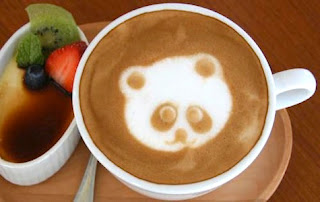so a friend asked me to do her 21st invites recently and this is what i came up with. The theme was "when i grow up" and she wanted something quirky...
Monday, 22 August 2011
Tuesday, 16 August 2011
Invitations
So its one of my best friends 21st coming up and i have been asked to do her invitations for her... eeek! She needs them to be printed and sent out this week. She isnt into art like I am so she trusted me with it, but goodness the pressure! So I have all the vital information, the theme: When I grow up? So ive decided to make her invitations schoolbook - like.. -pics coming soon-
Eco Friendly Design Pics :)
Green Design
We were asked to do a presentation, or speech almost about an aspect of design. Being in this eco consious day that we are in, I decided to do Green Design (or eco consious design.)
Toyota does it, celebrities make a point of going on about it, and even the government has climbed on board, so why does it seem like we care so little about being eco conscious in design?
Sustainability and Ecological are both words which are common and seem somewhat “trendy” in today’s society. But what do these words really mean? Well, sustainability is defined as the capacity to endure. In ecology, the word describes how biological systems diverse and productive over time. In other words, it’s the ability to have something remain over a long time, like a design without it becoming obsolete.
In design, in particular graphics, what is the main thing that we use so much of without even noticing? Yep, paper. We print, copy after copy, scribble sketch after sketch, wasting mountains of paper without even realizing.
Although the concern for paper consumption is reducing in Australia it was still reported in 2007 that over 44 million tonnes of waste were produced that year. Which equates to 2080kg per person. In a world where we are concerned about going green, with cars like the Prius, is it that recycling is becoming more of a trend as opposed to a necessity? Do people just say that they are recycling and not actually doing it? As a part of the younger generation who is reported to be the main age group where waste occurs, recycling is very low on my list of priorities. It is much easier to throw something in a waste bin as opposed to reusing or even separating paper and plastic and recycling it. Realistically, there is no reason why recycling need seem so hard.
The world wide web, although it seems that every man and his dog seems to have their own website nowadays, it is becoming the more eco-friendly way of displaying work and promoting business. The implementation of the web in design is definitely a bonus where ecology is concerned. Instead of people printing tangible portfolios out to take for a job interview, we can now just display our work on the web.
When we think about sustainable design, we normally think of eco conscious homes, and architecture in particular. We think about landscapes and buildings. But what about other forms of design, that don’t impact or leave a destructive path.
Environmental graffiti, often referred to as reverse graffiti is a method, most popular in big cities and urban areas, is a method of creating art or design through using cleaning materials as opposed to paints. Reverse graffiti is where the artist removes the dirt and the instead of adding it, like traditional graffiti. Reverse graffiti challenges ideals and perceptions while at
the same time shapes and changes the environment in which we live, whether people think for the better, or not. This method, some may remember the demonstration from the artist moose from last year, is a somewhat simple idea which is beginning to make exceptional impact over the world. He used a pressure washer and stencils to create a design, simple, but visually very impacting.
Sustainable design refers to the ability to create things which are environmentally friendly, whether that being structures (houses, buildings etc) landscapes or artworks. They are works which will not become obsolete over time, and in turn use technologies which will make the design almost self sufficient i.e solar power.
Designer Adrian McGregor, who spoke at this years AGIdeas, works in the landscape industry and owns landscape company McGregor Coxall in Sydney. His work in transforming landscapes from the barron lifeless land into works of art through sustainable landscape design. Ill draw your attention to his work at the Ballast Point Park, Sydney Harbor. The land, originally a barron landscape, mainly rock on Sydneys sea side was transformed into a landscape masterpiece. He used natural and raw materials to tie into the area, iron, stone and the landscape and flora was kept minimal. He used cut outs of the iron sculptures to create art as shown. I chose to show this example of his work because it is probably the best use of sustainable design I could find. This landscape has the ability to last a long time without needing much maintainance at all, which in the end, is what we are all striving to achieve
In summary, these are a few examples of green design to get you all thinking. In this day and age, its where design seems to be headed.
Monday, 8 August 2011
Subscribe to:
Posts (Atom)











